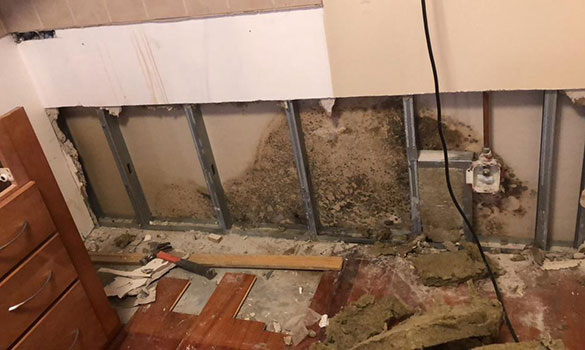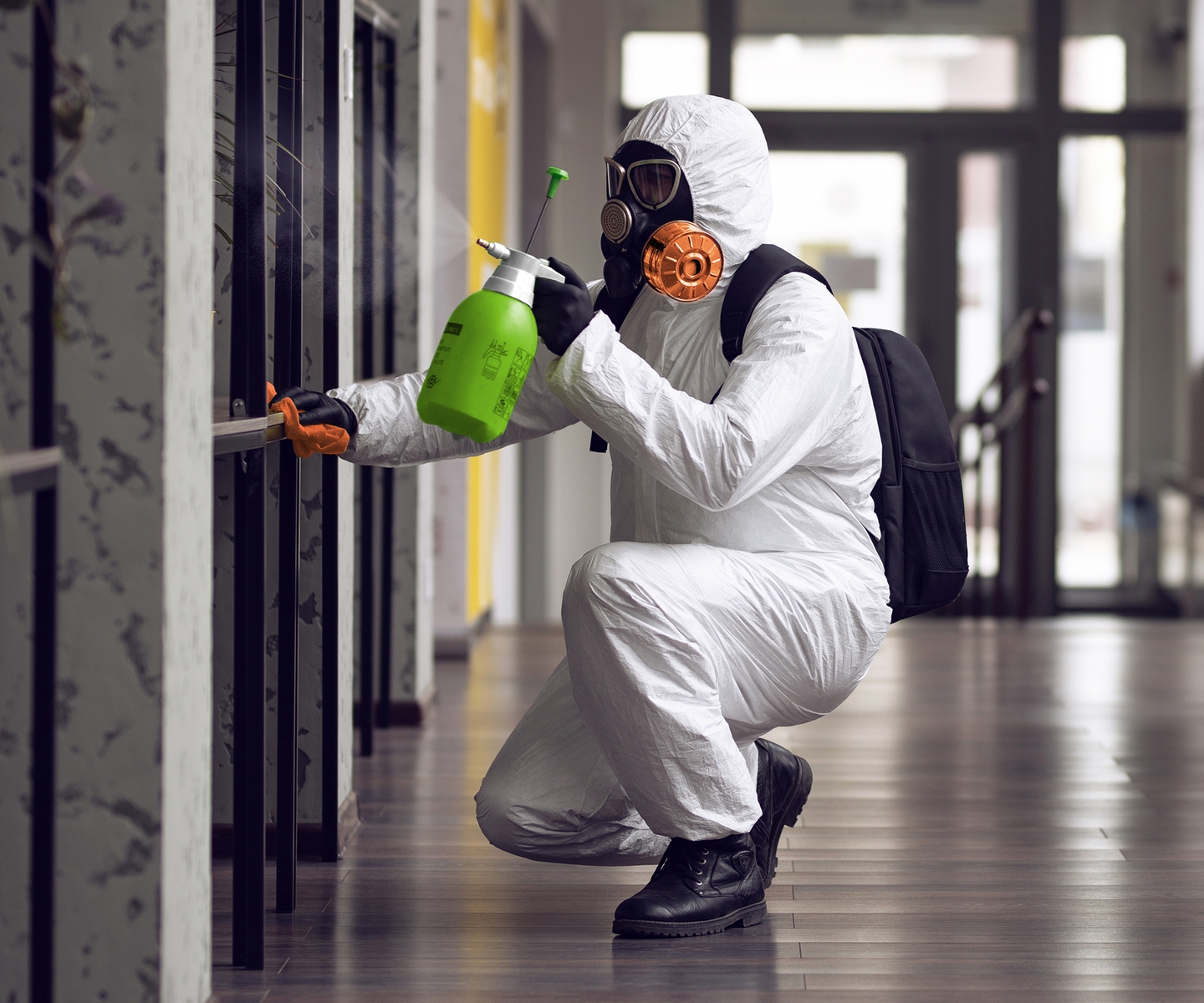Expert Tips for Choosing the Best Mold Remediation Philadelphia Firms
Reliable Mold And Mildew Remediation Methods to Eradicate Mold Contamination in Your Building
Mold and mildew contamination is an usual concern that residential property proprietors deal with, often leading to wellness problems and home damages otherwise resolved promptly and efficiently. The visibility of mold can be an indicator of underlying wetness issues that require to be settled to avoid its reoccurrence (mold remediation philadelphia pa). There are a number of methods available for mold and mildew remediation, each with its own collection of benefits and limitations. By recognizing the vital methods for eliminating mold, home owners can take positive actions to make sure a healthy and balanced and secure living environment.
Identifying Mold Sources

One main method for recognizing mold resources is performing an aesthetic assessment. This includes carefully evaluating all areas of the property, including surprise areas like behind wall surfaces and under flooring. Moisture meters and thermal imaging electronic cameras can likewise be used to find surprise water leaks or dampness pockets that might be advertising mold and mildew growth.
Additionally, air tasting can help identify mold sources by spotting raised mold and mildew spore levels in the air. By dealing with the root and determining reason for mold and mildew growth, removal efforts can be a lot more targeted and ultimately much more successful in getting rid of the mold and mildew contamination.
Appropriate Air Flow Techniques
Reliable mold removal not only depends on recognizing mold and mildew resources however additionally stresses the relevance of implementing proper air flow methods to avoid future mold and mildew growth (local mold remediation philadelphia). Appropriate ventilation plays an important duty in managing interior moisture degrees, which consequently aids to dissuade mold spores from growing in wet atmospheres. By ensuring good air flow throughout the residential property, excess moisture can be decreased, therefore creating a setting much less for mold and mildew growth
One efficient air flow technique is using exhaust fans in moisture-prone locations such as washrooms, kitchens, and utility room. These followers aid to eliminate moist air and prevent it from building up on surfaces. Additionally, opening up doors and windows when weather condition permits can likewise assist in boosting air flow and decreasing wetness levels indoors.
It is necessary to deal with any kind of ventilation problems quickly to maintain a healthy and balanced interior atmosphere and avoid mold and mildew contamination. Regular maintenance of air flow systems, such as cleaning filters and air ducts, is necessary to make sure optimal air flow and avoid the buildup of moisture that could bring about mold and mildew growth.
Efficient Cleaning and Disinfecting
Mold and mildew spores can spread rapidly if not effectively cleaned up and decontaminated, leading to recurring mold growth and possible health and wellness dangers. When tackling mold contamination, it is critical to start by removing any kind of visible mold and mildew growth using ideal cleaning remedies and methods.
After the physical removal of mold and mildew, sanitizing the influenced areas is essential to kill any kind of staying mold spores and prevent regrowth. Regular cleaning and sanitizing practices can help preserve a mold-free setting and protect the health and wellness of passengers in the building.
Encapsulation and Sealing

Encapsulation and securing are crucial techniques in mold and mildew removal tasks to stop the reappearance of mold and mildew development. Encapsulation includes the application of a specialized sealant over surface areas impacted by mold. This sealer acts as a barrier, see this here enveloping the mold and mildew spores and preventing them from ending up being air-borne and infecting other locations. By encapsulating the mold, it successfully seals the mold-infested surface areas, inhibiting further growth and reducing the risk of exposure to dangerous mold bits.
By securing off cracks, crevices, and spaces in walls, floorings, or ceilings, the entrance factors for moisture and mold and mildew spores are decreased, producing an atmosphere much less conducive to mold development. This technique not only avoids the spread of mold and mildew yet additionally aids in regulating humidity degrees within the home, even more dissuading mold and mildew growth.
Monitoring and Avoidance
In maintaining a mold-free environment post-encapsulation and securing, detailed surveillance and prevention approaches play an essential role in making certain long-lasting efficiency. Routine examinations are important to find any indications of mold and mildew renewal or new growth immediately. These inspections should incorporate not only formerly influenced locations but also various other susceptible areas susceptible to moisture accumulation.
Checking humidity degrees is important in mold prevention. Keeping indoor humidity listed below 60% can substantially hinder mold development. Using dehumidifiers in damp locations, such as washrooms and cellars, can help in keeping optimum moisture degrees. Appropriate ventilation, consisting of the use of exhaust fans in More Help shower rooms and cooking areas, is likewise critical in minimizing wetness and avoiding mold and mildew growth.
Additionally, informing occupants on mold and mildew avoidance practices, such as without delay taking care of leakages, enhancing air circulation, and attending to condensation issues, is critical. Encouraging tidiness and prompt removal of any kind of water-damaged products can even more hinder mold and mildew infestations. By implementing a thorough monitoring and avoidance strategy, building proprietors can effectively secure their rooms versus mold and mildew contamination.
Conclusion
To conclude, effective mold remediation approaches are essential in eliminating mold contamination in residential properties. By determining mold and mildew sources, executing correct ventilation methods, making use of efficient cleansing and disinfecting techniques, encapsulating and sealing influenced locations, and continuously tracking and avoiding future mold development, home proprietors can efficiently get rid of mold and mildew problems. It is necessary to address mold contamination quickly to maintain a healthy indoor atmosphere and avoid more damage.
Reliable mold removal not only counts on recognizing mold and mildew resources yet additionally highlights the value of executing correct air flow techniques to prevent future mold development. When taking on mold contamination, it is important to begin by getting rid of any noticeable mold and mildew more tips here growth utilizing proper cleansing solutions and strategies.Encapsulation and sealing are important methods in mold remediation projects to prevent the reappearance of mold development. By securing off fractures, gaps, and gaps in walls, floors, or ceilings, the entrance points for wetness and mold and mildew spores are lessened, creating an atmosphere much less helpful to mold growth. By recognizing mold sources, carrying out proper ventilation strategies, using reliable cleaning and decontaminating methods, sealing and encapsulating affected locations, and continually tracking and stopping future mold and mildew growth, residential property owners can successfully get rid of mold and mildew issues.